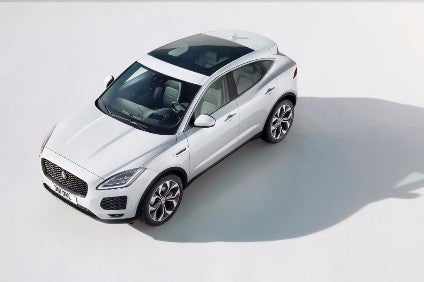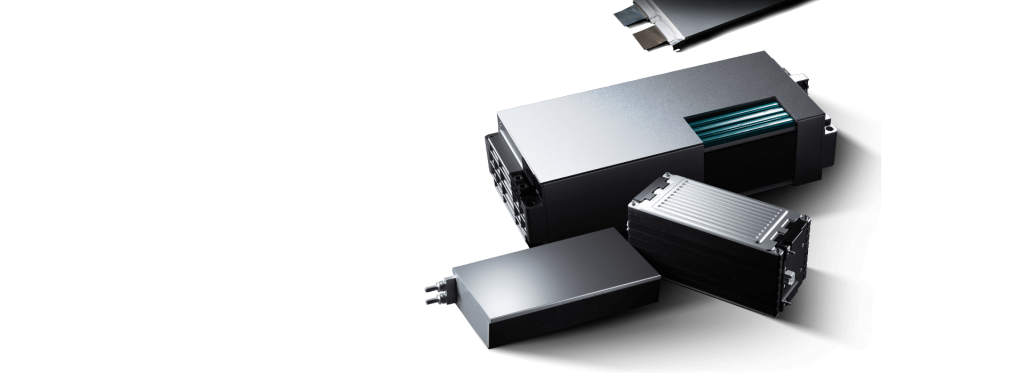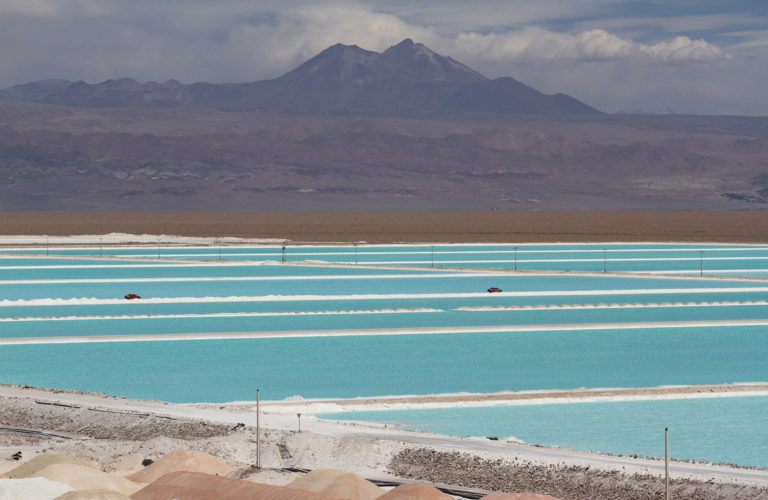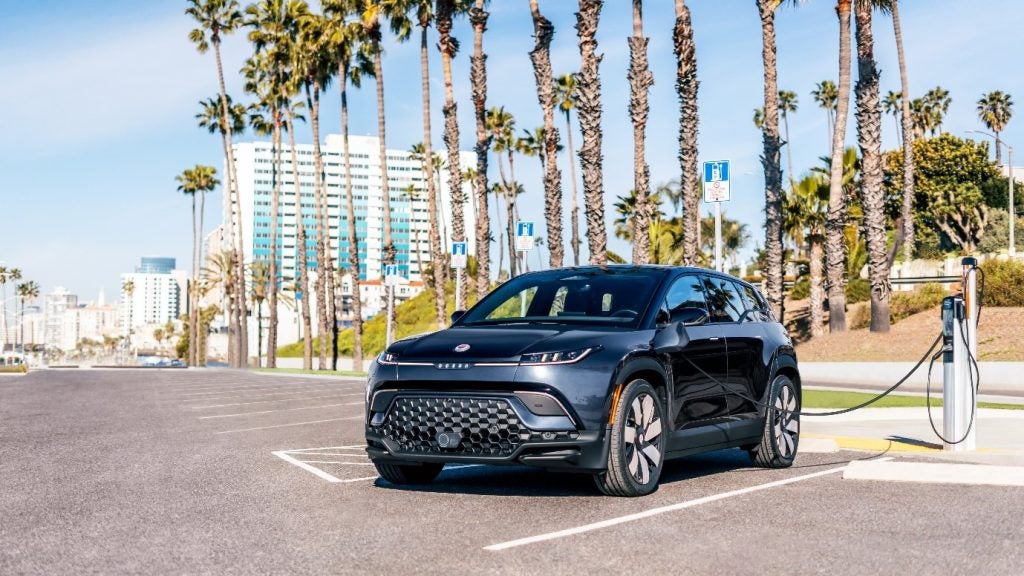
Tata Motors‘ premium automobile brand Jaguar got right to the point when unveiling the new E-Pace compact SUV at a media technical briefing today (13 July) in London: they’re not going to make it.
Instead, like the planned all-electric I-Pace, assembly will be contracted out to Magna Steyr in Graz, Austria which has decades of experience screwing together vehicles for other automakers such as Daimler, BMW, Mini and Chrysler, often specialising in low-volume, niche specialist variants of volume models.
“We’re full up [at Solihull, Castle Bromwich and Halewood],” is the Jaguar spokesman’s response to the inevitable why-contract-out question. With last fiscal year’s 1 April-31 March Jaguar sales alone up 83% year on year, to 172,848 units, it’s not hard to see why space on the lines in Jaguar Land Rover’s three main group plants is now at a premium. And the new(ish) engine plant at Wolverhampton better be geared up, too, because here is another model line with its mouth wide open, ready to be fed a diet of the new, home-grown petrol and diesel Ingenium I4 engines mounted, in this case, transversely.
Jaguar has high hopes for its new baby (in-house name is Cub; look for the mother and baby silhouette at the base of the windscreen). Asked about rivals, a spokesman confidently said “there really aren’t any” as, size wise, the 4,395mm long, 2,088mm wide, 1,649mm high on a 2,681mm wheelbase E-Pace fits “more or less between [BMW’s] X1 and X3”. Though there will be brand loyalists just waiting for a baby Jag SUV (order books opened today; first deliveries “within six months”), I’d expect buyers eyeing this from-just-over-GBP28,500, mostly-automatic, nearly-all-4WD model line to also shop Audi, BMW, and maybe eye also the larger new Volvo XC60 (smaller XC40 due in 2019). The base E-Pace may also chip away a little business from some of the higher end new offerings amngst the non-premium VW group brands, too.
Thanks to the successful, larger F-Pace, Jaguar now has form with SUVs and plenty of customer experience and feedback to draw on; with over 80,000 shifted last fiscal year, it is, for now, the brand’s top seller. But Jaguar sees even greater potential for the E-Pace due to its more compact size as well as the 37% growth in global SUV sales last year with another 23% hike forecast out to 2020. The automaker is looking for an ambitious “80% brand conquest” rate for the E-Pace, bringing in “incremental business” and sees “young connected couples, not necessarily with children”, as a key target. “It may be the only car in the household”, the planners think. Behind tall, long-legged drivers, legroom is quite limited for adults but the interior should prove spacious enough for more average size couples and those with younger families. The car has been styled and packaged, as Jaguar design chief Ian Callum emphasised, as a sporty SUV in the leaping-cat brand’s tradition rather than as a load-lugging box (JLR has those elsewhere in its group product lines) so the sloping tailgate restricts height a bit and only the asymmetric split rear seatbacks fold, not the cushions as well, so the load floor extension is not flat. But Jaguar claims you’ll still get a full size baby buggy and a full size set of golf clubs into the unextended boot alone, and aids access with an available power tailgate operated, if desired, by ‘gesture’ – waving a foot under the rear bumper. I also noted, with satisfaction, a spare wheel in each of the three models shown to the media.
I recall low-slung Jaguar sedans of the 1970s and 80s with cockpits you didn’t so much get into as put on – they really were snug with acres of leather, quality carpet and wood veneer and then there was the legendary E-type sportster. Callum talked of the challenges his design team faced making SUVs look low and slippery even though they’re tall – the high seating position with good view out and ease of access are reasons so many people buy them. They’ve certainly made the E-Pace look sleek with some clever panel sculpting, the use of accent lines that fade out and in again, plus a lower front facia chamfered to create the illusion of a longer front overhang than it really is. “Designers hate overhangs,” said Callum, “we like a wheel in each corner”. He also likes h-u-g-e wheels and mentioned the 21-inchers fitted to some variants several times. Designers also like wheels that fill the wheelarch, it appears. My first impression of the head-on rear view was that it is reminiscent of the 1960s E-type coupe but Callum said it wasn’t and explained how a mix of body work to glass proportions and rear screen angle was combined for just the right, sporty look. While the E-Pace is clearly F-Pace’s smaller sibling, it has many design cues of its own including distinctive headlamps (with ‘J wave’ DRLs) and tail lamps, side profile, glasshouse and waistline but the “aggressive grilles” (in Callum’s words) are common.
How well do you really know your competitors?
Access the most comprehensive Company Profiles on the market, powered by GlobalData. Save hours of research. Gain competitive edge.

Thank you!
Your download email will arrive shortly
Not ready to buy yet? Download a free sample
We are confident about the unique quality of our Company Profiles. However, we want you to make the most beneficial decision for your business, so we offer a free sample that you can download by submitting the below form
By GlobalDataWith 15 years of lightweighting under the Jaguar belt you’d expect some alternative metals in the E-Pace and it has aluminium bonnet, roof and tailgate, collectively weighing 30kg less than the steel equivalents. The base dashboard structure is magnesium and there’s some boron in there somewhere, too. Bodyside steel is just 0.7mm thick, saving 3.5kg. There are four roof designs, including three variations – size and style – of panoramic sunroof.
Inside, the emphasis has been on achieving a very comfortable driving position and an instrument and control layout that will feel at home to anyone familiar with recent Jaguars. Items such as a large centre display screen (around 10 inches) and a customisable, 12.3-inch, all-digital instrument cluster allowing a pick ‘n’ mix of engine info, speed, infotainment and 3D navigation aren’t new to Jaguar but welcome, even though some are optional, down at this price point. There is also a new head-up display with improved graphics and more information. Callum, who clearly dislikes all-touchscreen minor controls, is very proud of the latest iteration of ‘tactile’ HVAC control knobs, with haptic feedback modelled on SLR camera lenses, though I think the precise order of the adjacent row of almost identical buttons may take some learning. There is also a big emphasis on connectivity – no fewer than five USB ports and four 12V power outlets can be specified and an available 4G LTE wifi hot spot to connect up to eight devices should ensure no fights over who gets to go online first.
There is also a big emphasis on storage space with large door bins capable of holding one-litre bottles and a large centre console cubby that can be variously configured to hold “two bottles of wine”, a tablet upright while it charges and phones in various handy access positions. The glovebox is also large and lined.
Though there will be a vast option list of individual items and packs, Jaguar has kept the basic E-Pace range fairly simple – 249PS and 300PS petrol Ingenium engines plus a 150PS Td4 entry level and SD4 180PS and 240PS turbodiesels. The 150PS and 180PS units are the only engines offered with manual transmission, everything else is nine-speed ZF automatic. Only the 150PS diesel has two-wheel drive; all others are all-wheel drive though the higher output engines have a more sophisticated system for proportioning torque to the rear wheels. Trims are (chrome accent) standard and (black decoration) sporty R-Dynamic. Suspension is a mix of proven and updated designs, specially tuned for the E-Pace.
As is becoming common among automakers, a specially equipped First Edition variant will also be offered throughout the first model year, rather than being limited by unit count. This will have either the 180PS diesel or the 249PS petrol engine, ZF auto and R-Dynamic base trim plus the SE option pack.
There’s an old engineering saying along the lines of ‘if it looks right, it probably is right’. I like the look of the E-Pace from every angle, inside and out, and it seems to be sized right and specified right to appeal to a large audience. I reckon it’ll sell like hot cakes, like the F-Pace before it, and can’t wait for a first drive.







